Service of transport and passenger aircraft of the Third Reich in the post-war period: Ju 52 and others
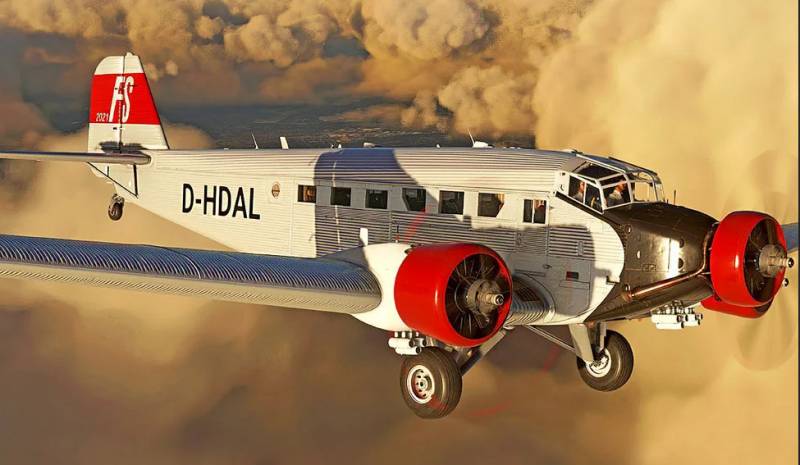
Before and during World War II, Germany exported transport and passenger aircraft. These were commercial transactions, as well as preferential supplies to allied states.
After the surrender of the Third Reich, many serviceable aircraft remained in the liberated territories, as well as enterprises for their production and repair. Officially purchased, captured and assembled from German reserves, transport and passenger aircraft were the subject of resale, and were operated in a number of countries until the early 1980s.
Transport and passenger aircraft Junkers Ju 52
Of course, the most famous German aircraft, widely used for the delivery of various cargoes and transportation of passengers, is the Junkers Ju 52/3m (3m in the designation means drei Motoren with German - “three-engine”). In Germany, this car had the unofficial nicknames Tante Ju - “Aunt Yu” and Eiserne Annie - “Iron Annie”.
The prefix drei Motoren in the designation of production vehicles appeared due to the fact that the prototype, known as Ju 52ba or Ju 52/1m, was initially equipped with a single liquid-cooled engine with a power of about 800 hp. With.
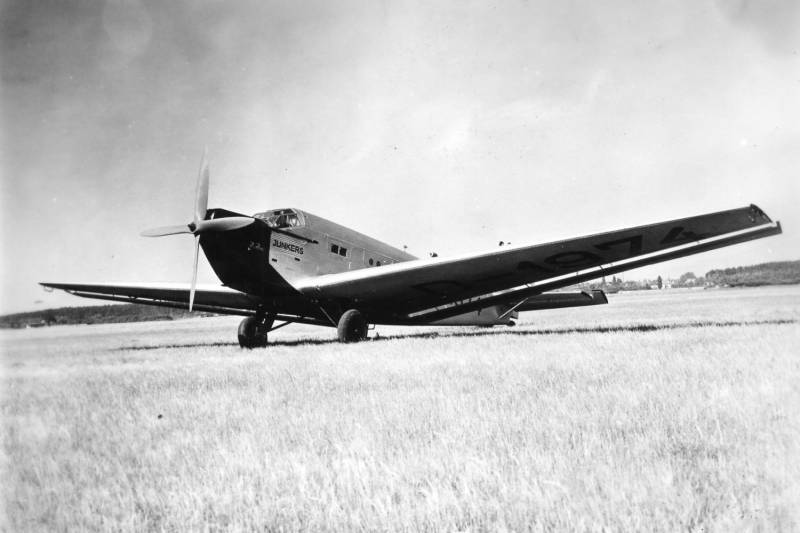
Ju 52ba
The single-engine Ju 52 took flight in October 1930, and testing of the three-engine aircraft began in April 1931.
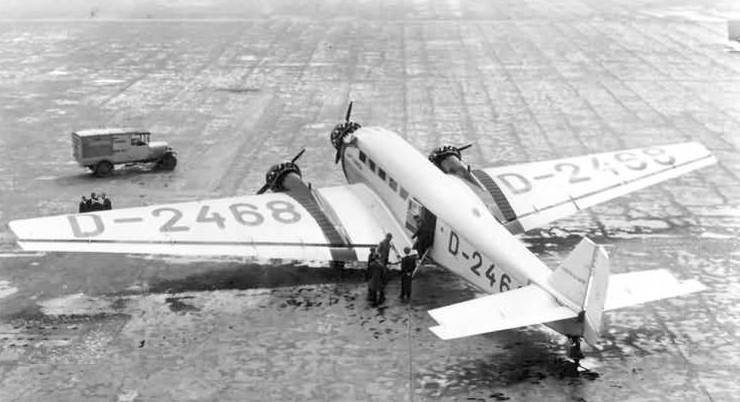
Ju 52/3mce
Production aircraft of the Ju 52/3mce and Ju 52/3fe modifications were equipped with star-shaped 9-cylinder BMW 132 engines (licensed version of the Pratt & Whitney R-1690 Hornet) with a power of 660 hp. With.
The aircraft had an advanced design for the early 1930s. It was an all-metal cantilever monoplane with a lower wing and a fixed landing gear, assembled from corrugated duralumin.
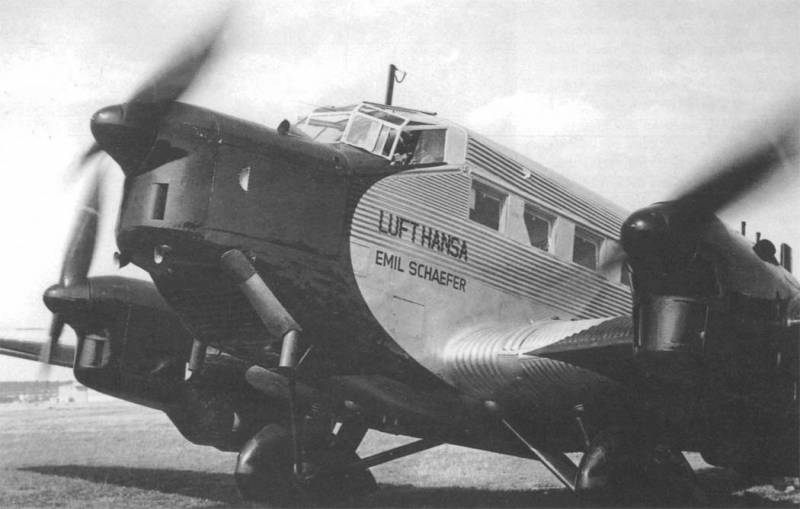
Ju.52/3mho with Jumo 205 diesel engines
Depending on the year of manufacture and variant, various engines (including diesel) could be installed. In total, 15 civilian and 11 military versions of the Ju 52/3m are known.
The aircraft of the Ju 52/3m-g7e modification, widely used in the Luftwaffe, with an enlarged cargo hatch on board and an autopilot, was equipped with three BMW-132A-3 engines with a power of 725 hp. With. every.
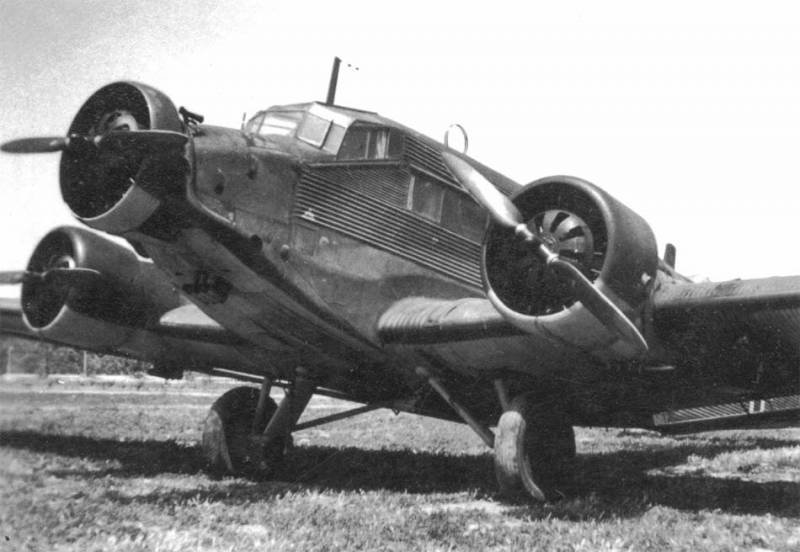
The three-engine Junkers was capable of carrying 18 passengers or 1 kg of cargo. The aircraft with a wingspan of 500 m and a fuselage length of 29,3 m had a maximum take-off weight of 18,9 kg. Maximum speed – 10 km/h. Cruising - 500 km/h.
The practical flight range was 990 km. With the use of additional fuel tanks, the range increased to 1 km. The service ceiling is 300 m. Aircraft of different modifications, equipped with different engines, could differ significantly in speed, range and flight altitude.
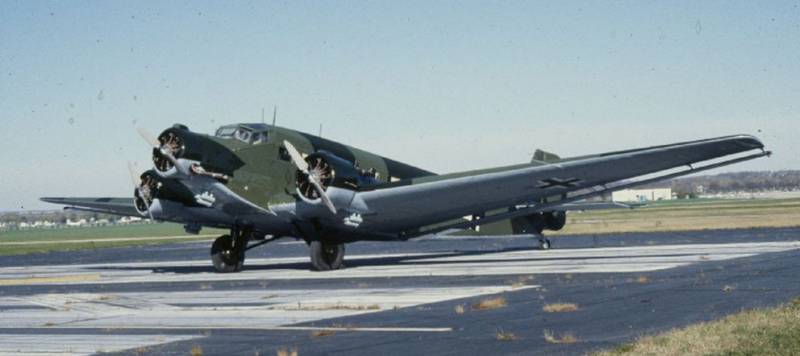
To protect against fighters, some of the Ju 52s that served in the German Air Force were armed with one 13 mm and a pair of 7,92 mm machine guns. At an early stage of operation, aircraft of the Ju 52/3m-g3e modification were used as bombers. The bomb load was 500 kg.
The first foreign order for the Ju 52 came from the Bolivian airline Lloyd Aéreo Boliviano in 1932. Before the start of World War II, transport and passenger Junkers were exported to Austria, Argentina, Belgium, Bulgaria, Bolivia, Great Britain, Hungary, Greece, Spain, Italy, Canada, China, Norway, Poland, Portugal, Romania, USSR, USA, Turkey, France, Czechoslovakia, Switzerland, Sweden, Estonia and South Africa.
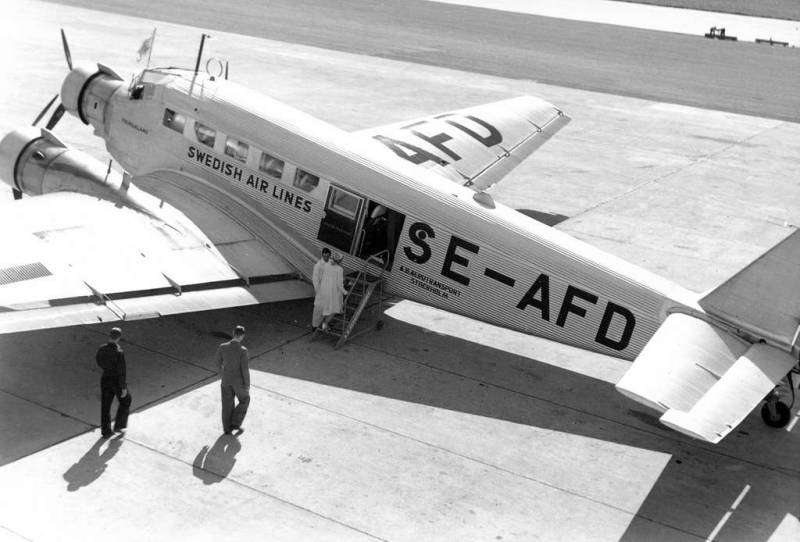
Swedish Ju 52
According to reference data, 1932 Ju 1945/4m were produced on the territory of the Third Reich from 845 to 52. After the war, the service of this very successful machine continued. Thus, in the USSR until 3, 1951 aircraft were operated. Several Ju 37s served transport and civil operations in the desert conditions of Turkmenistan and the Far North, where they performed well.
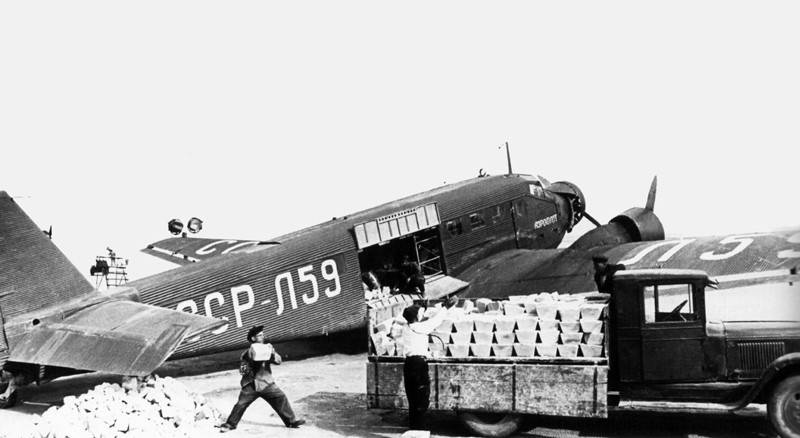
In the post-war period, Ju 52s spread widely throughout the world, mastering routes in Central and South America, Africa and the Middle East. They were actively used by many European airlines, and they were also used by the air forces of several countries. Thus, Portugal, until the early 1970s, used the Ju 52 for military transport during combat operations in its African colonies. These aircraft served in the Swiss Air Force until 1982.
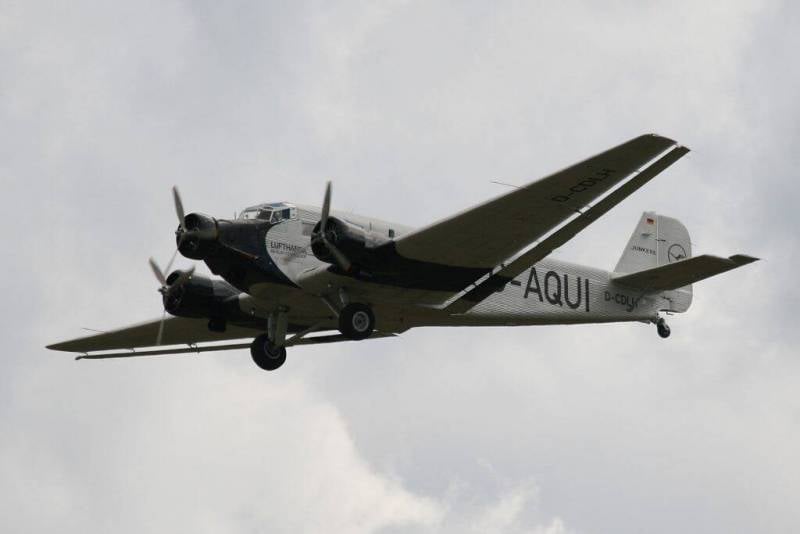
In the post-war years, production of three-engine Junkers continued at the production facilities of the French aircraft manufacturing company Avions Amiot.
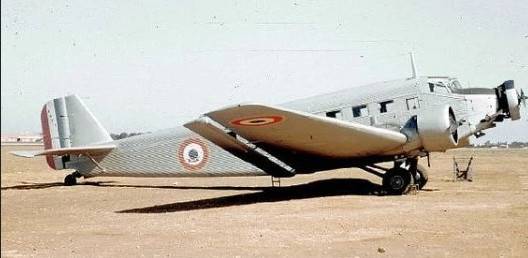
Amiot AAC 1 Toucan
The aircraft built in France after its liberation from the Nazis are known as the Amiot AAC 1 Toucan. The French Toucan differed from the original “Aunt Yu” in the absence of firing points, a more durable design and French-made instruments. These planes took part in armed conflicts in Indochina and Algeria, sometimes dropping bombs on rebel positions. A total of 415 Toucans were built, some of the vehicles were exported to Portugal and Yugoslavia.
Since 1945, the Spanish aircraft manufacturer Construcciones Aeronauticas SA (CASA) has licensed the Ju 52/3m-g10e under the designation CASA 352. This modification was adapted for operation in hot climates and had a reinforced landing gear. A total of 106 examples were built.
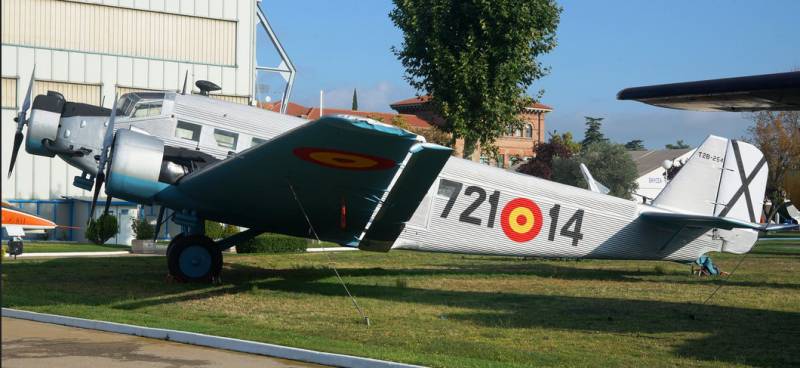
HOME 352
After the supply of German-made aircraft engines was exhausted, ENMA Beta B-4 engines with a power of 775 hp began to be installed on aircraft. With. (Spanish version of BMW 132). This modification, known as CASA 352L, differed from the original Junkers in the shape of the engine hood and other small details. Some sources claim that American-made engines were also installed on these aircraft. Until 1952, 64 CASA 352L were passed.
In 1958, Spanish Ju 52 clones took part in the fight against guerrillas in Western Sahara. Local rebels cut communications between Spanish strongholds in order to force Spain to withdraw from North Africa. Spanish Junkers landed parachute troops, delivered people and cargo, and several vehicles were converted into bombers. In 1969, several combat vehicles, made up in Luftwaffe colors, took part in the filming of the film “The Battle of Britain”.
The Spanish Air Force completely abandoned CASA-352 in 1978. Currently, 22 CASA-352 aircraft have been preserved, some of them are airworthy and regularly participate in demonstrations, some are on display in various museums.
Transport-passenger aircraft and long-range maritime reconnaissance aircraft Junkers Ju 290
A relatively little-known aircraft is the four-engine Ju 290, which was developed for transport and passenger transport, and was also used as a long-range naval reconnaissance aircraft and bomber.
The Ju 290 aircraft (originally called Ju.90S) is a further development of the transport and passenger Ju.90, which was created on the basis of the heavy long-range bomber Ju 89. Unlike the Ju.90, the modified Ju 290 had an extended fuselage, a hydraulic loading ramp in the tail parts and more powerful engines.
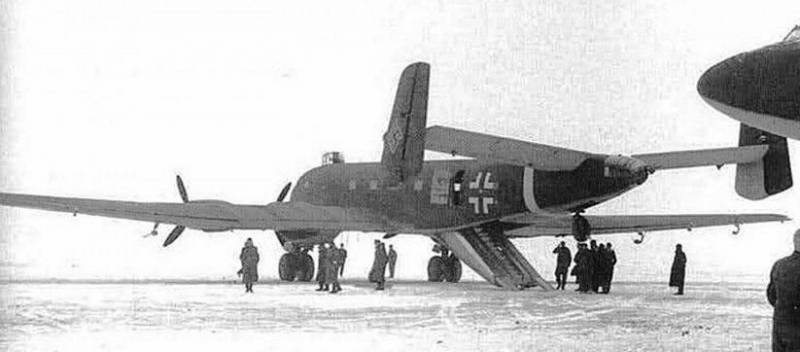
Ju-290A-1 aircraft with lowered cargo ramp
The prototype Ju-90S V7 had a monocoque fuselage made of duralumin and an all-metal spaced tail unit. The power plant consisted of four 12-cylinder liquid-cooled DB-600A engines with a power of 960 hp. With. every.
Serial production since 1942 was carried out at the Junkers plant in Bernburg and the captured production facilities of the Czechoslovakian Letov enterprise. Most sources agree that 65 aircraft were built before the end of the war.
Production aircraft were equipped with 14-cylinder radial piston air-cooled BMW 801G engines with a take-off power of 1 hp. With. every. The maximum take-off weight of the Ju 700A-290 modification reached 5 kg. Maximum flight speed is 44 km/h. Cruising at an altitude of 970 m - 439 km/h. Practical flight range is 5 km. Service ceiling – 800 m. Crew – 360 people.
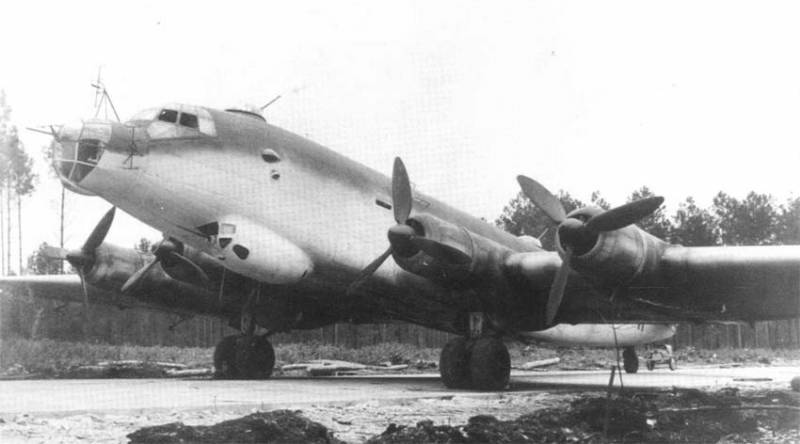
Ju 290A-5
Aircraft of early modifications Ju 290A-0 and Ju 290A-1, capable of carrying 48 soldiers, initially did not have defensive weapons, but due to the need to fly close to the front line, where there was a likelihood of encountering fighters, they were armed with 7,92 mm and 13 mm machine guns.
Later, production Ju 290s were equipped with very powerful weapons. The lower gondola housed a 20-mm MG 151/20 cannon, firing forward, and a 13-mm MG 131 machine gun, firing backward. A remote-controlled turret with an MG 151/20 cannon was installed behind the cabin; another MG 151/20 was located in the rear gunner's cabin. Two MG 131 machine guns were installed in the side windows.
Due to the acute shortage of long-range naval reconnaissance aircraft tracking the Allied Atlantic convoys, the Kriegsmarine command demanded the creation of a reconnaissance and patrol version of the Ju 290. In 1943, three Ju-290A-2 aircraft were converted from Ju-290A-1 transport aircraft. This modification was followed by specially built reconnaissance aircraft Ju-290A-2, Ju-290A-3, Ju-290A-5 and Ju-290A-7.
The reconnaissance aircraft were equipped with radars, direction finders and long-range radio stations. To conduct long-range reconnaissance, 38 aircraft were built (according to other sources - 35 aircraft). Some Ju-290A, in addition to reconnaissance and communications equipment, could carry an Hs 294 guided anti-ship missile or an FX 1400 guided bomb.
The 50-seat passenger Ju-290A-6, built in a single copy and intended to transport senior military-political leadership, deserves special mention.
The reconnaissance Ju-290A-8 differed from the A-7 modification by the installation of two additional turrets with MG 151/20 cannons and a modified rear firing point. It was the most heavily armed variant of the Ju-290. The laying of three such aircraft took place, but they were not delivered before the end of hostilities.
It is unclear whether the Ju-290A-9 reconnaissance aircraft have entered combat units. The aircraft of this modification had a reduced number of weapons and a flight range of up to 8 km.
After the surrender of Nazi Germany, a small number of Ju 290 remained in serviceable condition. One long-range reconnaissance Ju 290A-4 fell into the hands of the Americans and was tested until 1946. The front of this aircraft was marked Alles Kaputt.
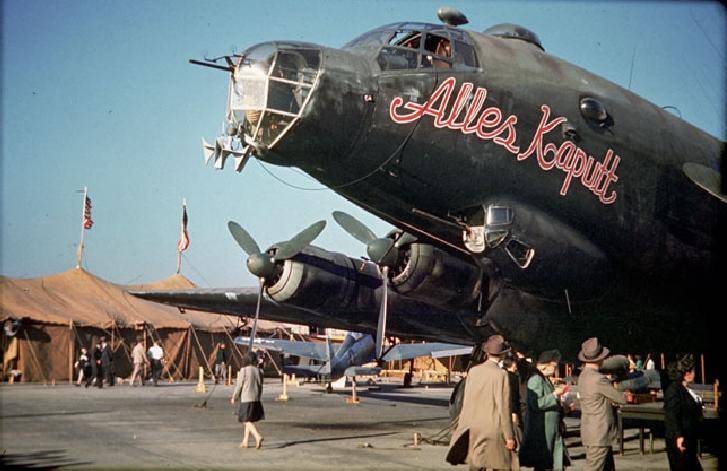
The British captured two Ju 290s and displayed them at the Farnborough Airshow before stripping them for metal in the late 1940s.
One Ju 290 flew to Barcelona and, after being converted into a 40-seat passenger aircraft, served in the Spanish Air Force until 1957.
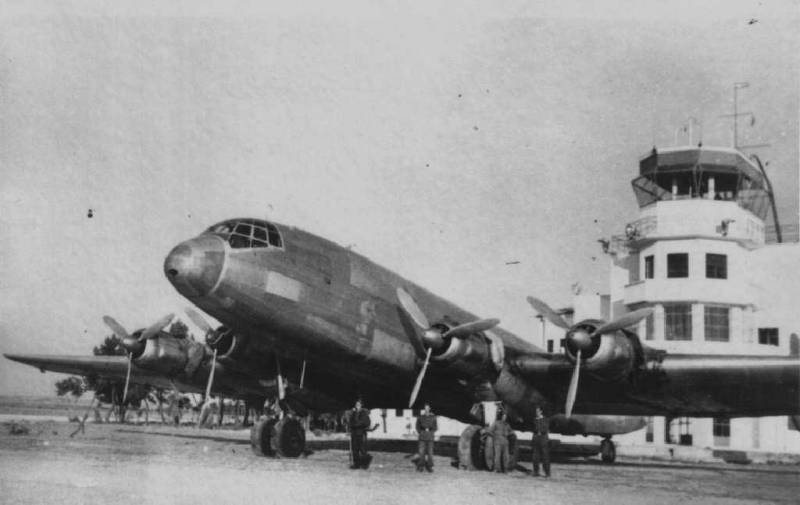
Spanish Ju 290
After the liberation of the Ruzine airfield near Prague, several partially disassembled Ju-290A-8 remained there, and in the second half of 1945, the Czechs completed one aircraft, using parts and components from the experienced Ju 290B-1 long-range bomber.

In Czechoslovakia, this vehicle was designated Letov L.290 Orel. The plane was intended to be used as a passenger aircraft, but due to operational problems, the Eagle's service was short-lived. At the end of 1946, the aircraft was written off.
Light transport and passenger aircraft Siebel Fh.104 Hallore
The renaissance of the German aircraft industry began even before the Nazis came to power, when in the late 1920s and early 1930s a number of aircraft manufacturing firms began creating civilian models that did not fall under the Versailles restrictions.
In 1934, the Klemm company built a new plant in Halle, where it was planned to master the production of all-metal aircraft. The factory design bureau designed the twin-engine Kl 104 Hallore (the name Hallore meant “from Halle”). In 1938, the aircraft was renamed Fh 104 Hallore.
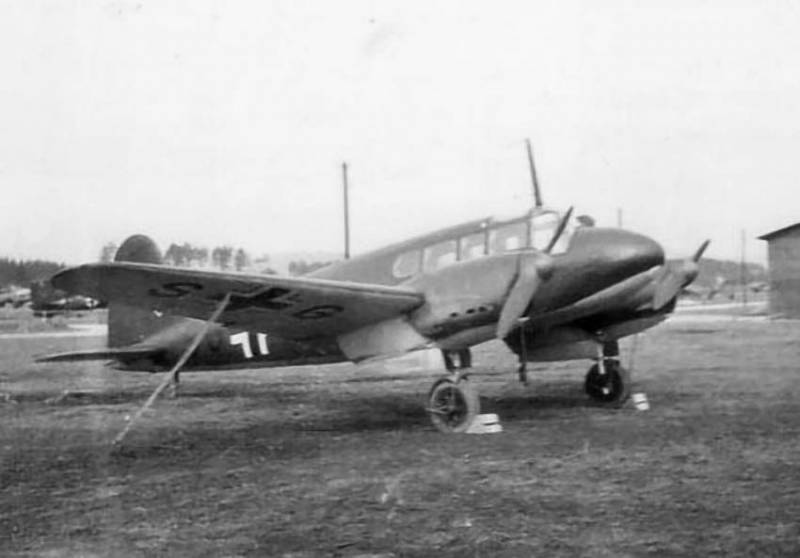
Fh 104A
The prototype made its first flight on February 25, 1937, and soon it took part in the Ministry's competition aviation Germany to create a light commercial aircraft suitable for transporting several passengers or 500 kg of cargo.
The Fh 104 had a mixed design: a metal fuselage and plywood-covered wings. The chassis was retracted into the lower part of the engine nacelles. Engines – 270-horsepower Hirth HM 508C. The plane, controlled by one pilot, could carry 5 passengers.
The maximum take-off weight was 2 kg. Maximum flight speed is up to 250 km/h. Cruising speed – 350 km/h. Practical range – 290 km. Service ceiling – 920 m.
Serial production of the Fh 104 began in 1939, but due to overload with military orders it did not last long. Until the second half of 1942, 46 copies were delivered.
At least 15 aircraft received civilian registration, and at the outbreak of World War II they were requisitioned and flown as courier aircraft or became the personal aircraft of high-ranking civilian officials and generals.
During wartime, Slovakia received several Fh 104s, and after the end of World War II, these vehicles, under the designations C-30 and D-54, served in the Czechoslovak Air Force.
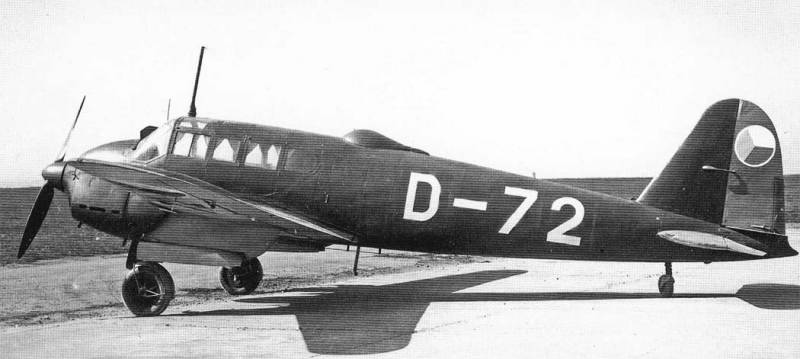
The aircraft, nicknamed Malý Síb (“Little Siebl”), were used for training and transport purposes until the second half of the 1950s.
Transport-passenger and training aircraft Siebel Si 204
The twin-engine Si 204 aircraft, created by Siebel based on the Fh 104 design, turned out to be very successful. The impetus for the design of this machine was the desire of the Luftwaffe command to obtain a twin-engine training aircraft with cockpit glazing, similar to the He 111 bomber, optimal for training navigators, pilots and gunners-radio operators.
In May 1940, a prototype with a conventional cabin and a power plant of two Argus As 410 engines with a power of 360 hp each took off. With. After the construction of another prototype aircraft, the installation series Si 204A-0 was produced at the Halle plant, and then a small number of improved production Si 204A-1.
Since World War II was already in full swing, most of the aircraft built did not end up in civil aviation, but in the Luftwaffe, where they were used as communications and training aircraft.
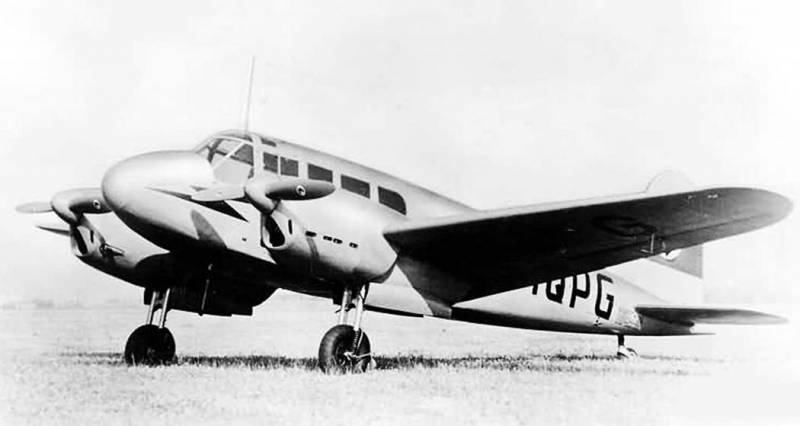
Si 204A
The next modification is the Si 204D with a new glazed nose and a cabin without a separate flat windshield for the pilot and Argus As 411-A1 engines with a power of 590 hp. With. appeared in 1942.
The aircraft with a maximum take-off weight of 5 kg had a practical flight range of 600 km. The maximum speed was 1 km/h. Cruising speed – 400 km/h. Service ceiling – 360 m. Crew – 310 people. In the passenger version, seats for 4 people were installed.
Due to the fact that the plant in Halle was busy with the production of Ju 88 bombers, the construction of the Si 204D began in France at the SNCAC plant, as well as in the Protectorate of Bohemia and Moravia at the Aero and ČKD-BMM plants. Taking into account the Si 204A aircraft, by January 1945, 1 units were delivered.
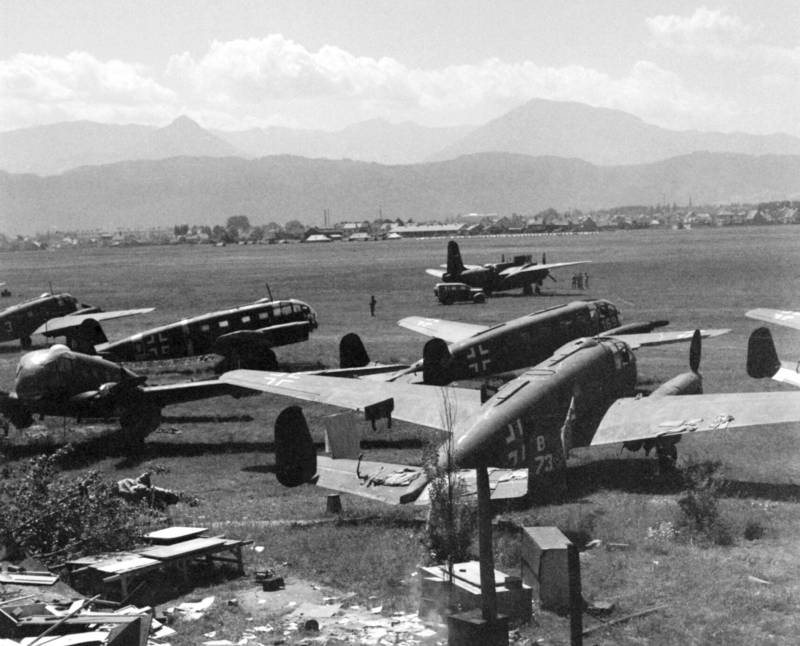
In the Luftwaffe, the Si 204D was mainly used for flight training and transport. They tried to use aircraft of the Si 204E modification, armed with three 13-mm machine guns, as night bombers and to fight partisans.
The pilot's seats were equipped with armored backrests, and bomb racks for 50 kg bombs were installed in the former passenger cabin. Bombs of caliber from 50 to 500 kg were suspended on holders under the fuselage (in front of the bomb bay). A bomb load weighing 160 kg could be suspended under the wing; as a rule, these were flare bombs.
The crew of the Si 204E consisted of four people. The exact number of Si 204Es built is unknown, and there is no information about their combat successes.
During the offensive operations of 1944–1945. The Red Army and Allied troops captured several dozen serviceable Siebels at German airfields, and some more Si 204Ds were available in aircraft repair shops and assembly plants.
Until the second half of 1946, the British used several Si 204Ds in the interests of the occupation administration. These aircraft carried out the delivery of small cargo and transportation of dignitaries.
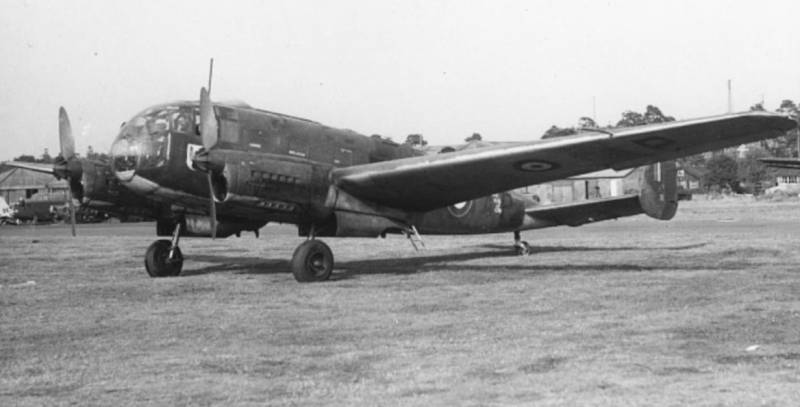
In the Soviet Air Force, at the first stage, the Si 204D was available in aviation units stationed in the territory liberated from the Nazis. These aircraft were used overtime, and often their presence was not reflected in the documents. Later, the Zibels were officially registered and partially transported to the territory of the USSR.
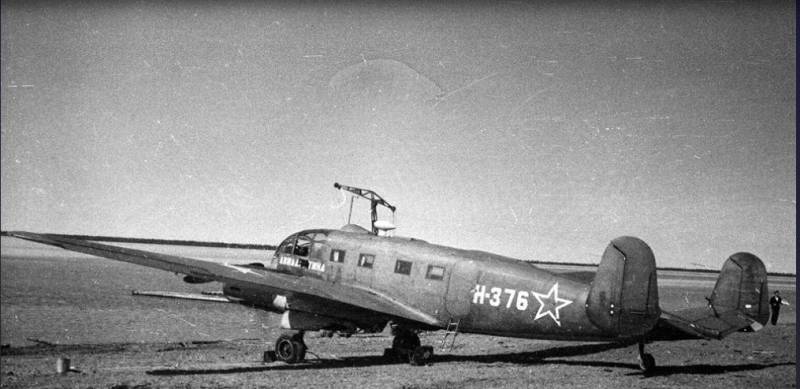
In Soviet civil aviation, the Si 204D received the designation Si-204. The plane, as they say, came in handy, and made it possible to partially bridge the gap between two mass categories - the large Li-2 and the small Po-2.
The captured Si-204 was liked by the flight crew. Pilots noted good maneuverability, ease of operation and excellent visibility from the cockpit.
Problems mainly arose with the repair and maintenance of Argus As 411-A1 engines, for which there were not enough consumables and spare parts. They tried to solve the difficulties by supplying the necessary parts from Czechoslovakia, and in 1947, seven Soviet aircraft were repaired at a plant in the vicinity of Prague. However, operational and logistical difficulties led to the fact that the last Si-204 in the USSR was written off in 1950.
In the post-war period, active exploitation of captured Si 204D continued in many countries. For example, in the Netherlands the Si 204D flew until the late 1960s.
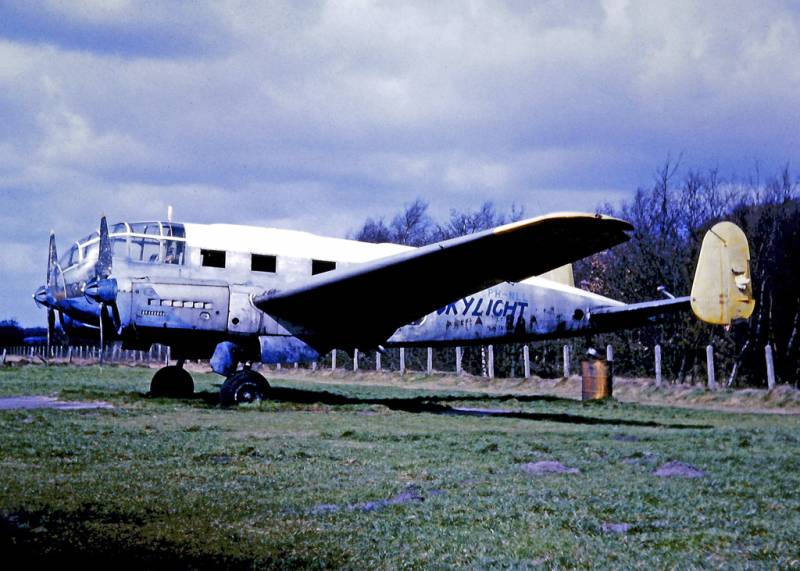
Dutch Si 204D at Hilversum Airport, 1967
At first these were aircraft captured from the Germans, but soon Si 204 production facilities began operating in France and Czechoslovakia.
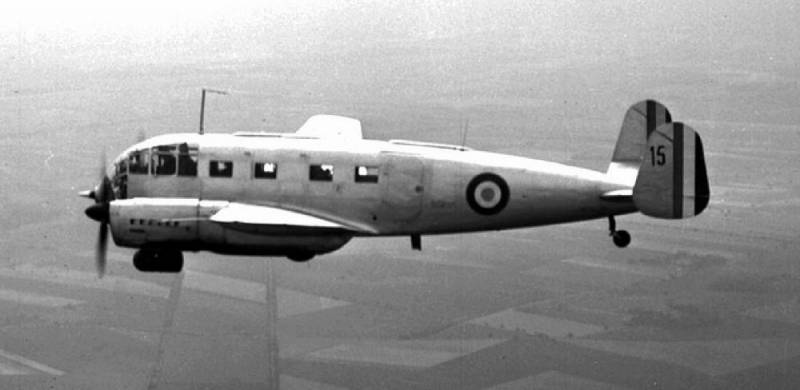
Post-war Czechoslovakian Siebels, intended for training pilots of twin-engine aircraft, were designated Aero C-3. The civilian transport and passenger version is known as the Aero C-103.
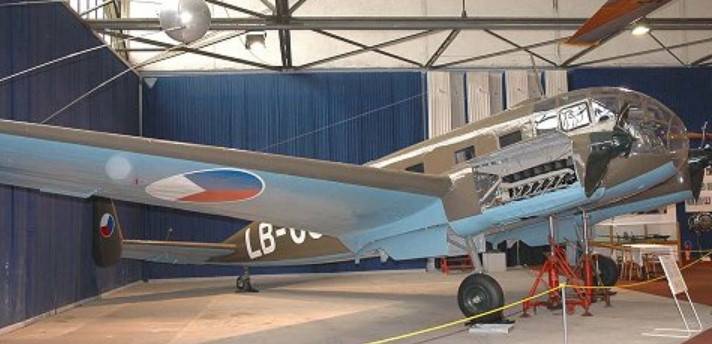
The military transport aircraft was designated Aero D-44. Six Aero C-3 aircraft were purchased by Hungary in 1946, where they flew until 1953.
In France, an aircraft manufactured by SNCAC, with a glazed cockpit, like on the Si 204D, and Renault 12S-00 engines with a power of 590 hp. With. received the designation NC.701 Martinet.
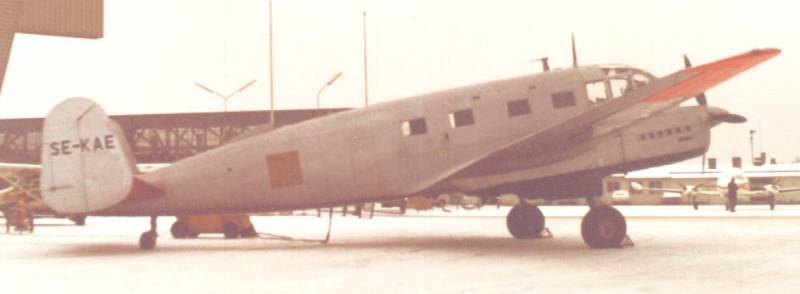
NC.701 Martinet
According to flight data, the NC.701 generally corresponded to the Si 204D, but the French engines provided a flight altitude of up to 5 m, and the practical range was reduced to 700 km.
The modification with a cabin of the Si 204A type became known as NC.702 Martinet.
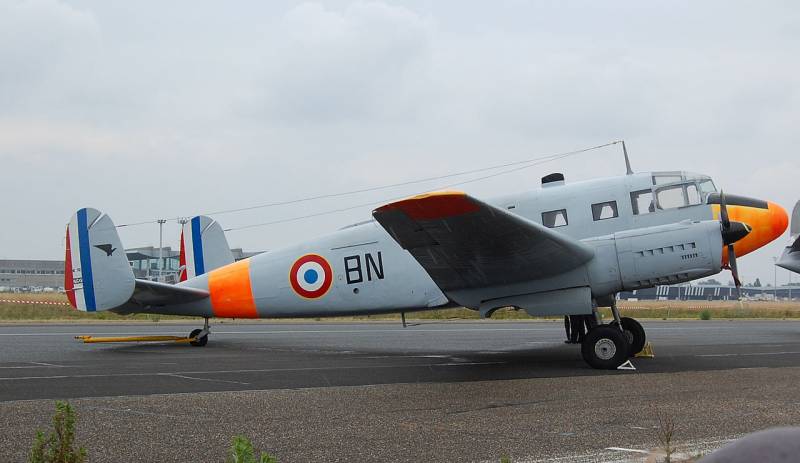
NC.702 Martinet
The production of NC.701/NC.702 lasted from 1945 to 1949. A total of 350 aircraft were produced.
The aircraft served in the French Air Force until 1963. A number of NC.701s and NC.702s were used by civil airlines including Air France, but they were replaced by larger aircraft such as the Douglas DC-1950 in the early 3s.
Martinets also delivered mail. NC.701 aircraft of the French National Geographical Institute were used for aerial photography. Poland and Sweden also purchased several aircraft for mapping work.
The last Martinet aircraft were withdrawn from service in the early 1970s.
Продолжение следует ...
Information